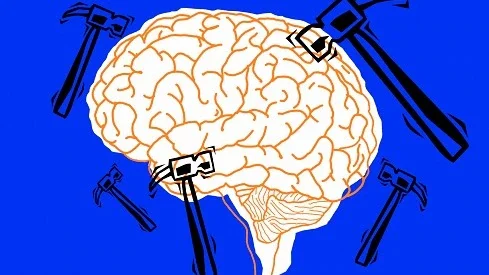Not just a bad headache: Why migraine is world’s second-most disabling condition

For decades, migraine has been dismissed as little more than a bad headache, an inconvenience rather than a serious neurological disorder.
But as science evolves, so does our understanding of this misunderstood condition that silently affects over a billion people worldwide. According to The Lancet, migraine ranks as the second leading cause of disability among neurological diseases globally, particularly among people aged 15 to 49, the most productive years of life.
Dr. Wanakorn Rattanawong, renowned neurologist at the Faculty of Medicine, King Mongkut’s Institute of Technology Ladkrabang and Bumrungrad International Hospital in Bangkok, says the biggest challenge begins with perception.
“Migraine is often dismissed as ‘just a headache’ because the functional changes in the brain that occur during an attack aren’t visible on standard brain scans,” he explains.
This invisibility has led people, including healthcare providers, to underestimate its severity.
A CONDITION HIDING IN PLAIN SIGHT
Despite its staggering impact, migraine remains heavily under-diagnosed and stigmatised even.
Nearly half of all migraine sufferers receive an incorrect diagnosis, and in many cases, it can take anywhere from one to five years to identify it correctly.
“Because it doesn’t show up on routine MRIs, people are often told there’s nothing wrong with them. Historically, that’s contributed to the false belief that migraine is psychological rather than a real neurological condition,” Dr. Rattanawong tells IndiaToday.in.
A MAJOR FINANCIAL LOSS
The stigma also seeps into the workplace and homes. People ask why someone can’t just push through a headache. But migraine isn’t just pain. It’s a disabling neurological event that disrupts cognitive function, focus, and energy.
“Productivity loss from migraine, known as presenteeism, where you’re at work but unable to perform—is three to five times higher than absenteeism,” he says.
This hidden productivity drain translates into massive global economic losses, costing billions of dollars in GDP each year. Yet the social and emotional costs are equally devastating.
Studies have shown that migraine imposes a significant economic burden of about Rs 18,674 crore annually due to productivity losses alone.
Migraine affects roughly 25% of the Indian population, translating to over 213 million cases each year. On average, people with migraine lose about 17.3 productive workdays per year, which causes major financial losses based on daily income rates.
LIVING THROUGH THE FOG
For those who live with it, a migraine attack can derail an entire day or several.
“The pain can be blinding, often accompanied by nausea, light and sound sensitivity, and brain fog,” says Dr. Rattanawong. Many patients describe it as losing control over their day.
Beyond physical suffering, migraine takes a toll on relationships and mental health. The inability to participate in family activities, care for children, or even engage in conversation can lead to guilt, frustration, and isolation.
“This lack of understanding from others amplifies emotional distress. That’s why effective migraine management isn’t just about pain relief—it’s about restoring a person’s ability to function and live normally,” he adds.
WHAT SETS IT OFF
The triggers for migraine are as complex as the condition itself.
Dr. Rattanawong lists stress, disrupted sleep, hormonal changes, and certain foods as the most common culprits.
“Skipping meals, dehydration, processed meats, aged cheese, chocolate, and even excessive caffeine can trigger attacks,” he says.
Environmental stimuli, like bright lights, loud noises, strong smells, or sudden changes in weather, can also tip the balance.
Small lifestyle changes can make a meaningful difference: maintaining a regular sleep schedule, managing stress, staying hydrated, and keeping a migraine diary to identify personal triggers.
“Lifestyle modifications alone may not eliminate migraines, but when combined with preventive medical treatments, they can dramatically reduce the frequency and severity of attacks,” says Dr. Rattanawong.
THE NEW AGE MIGRAINE MEDICINE
In recent years, a new generation of treatments has transformed migraine care. Unlike traditional painkillers, which only mask the pain, newer therapies like CGRP inhibitors and neuromodulation devices target the biological pathways that cause migraine.
These treatments are tailored to the unique neurochemical processes that drive the condition, reducing both how often and how severely attacks occur.
However, migraine is not a one-size-fits-all disorder.
Not all patients respond to CGRP inhibitors, which tells us migraine involves multiple neurotransmitters such as PACAP and VIP.
“The next frontier is precision medicine, where treatments are customised based on an individual’s genetic or biochemical profile,” says Dr. Rattanawong. “We are moving towards a future where migraine can be a fully manageable condition.”
WHEN TO SEEK HELP
Many people live with frequent, disabling headaches without realising they are migraines.
Dr. Rattanawong urges anyone whose headaches interfere with daily life to seek medical advice. If your headache is recurring, disabling, or affecting your routine, it’s time to see a doctor, he says.
“A proper diagnosis ensures you get migraine-specific treatment instead of relying on over-the-counter painkillers, which can worsen the condition if overused,” he adds.
Early recognition is critical not only to confirm migraine, but to prevent it from progressing into its chronic form.
For millions silently suffering, the biggest battle is still awareness. Migraine is not a character flaw, weakness, or stress response, it’s a neurological condition rooted in biology.
We need education, empathy, and a cultural shift that recognises migraine for what it is: one of the world’s most disabling, yet treatable, brain disorders. It needs to be treated like a disease, which it truly is.
– Ends
Published By:
Daphne Clarance
Published On:
Nov 13, 2025




